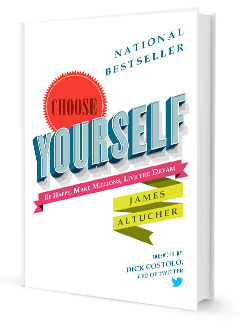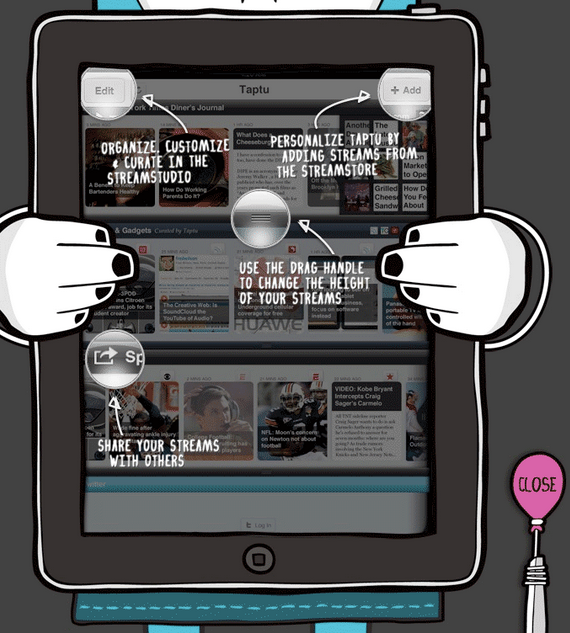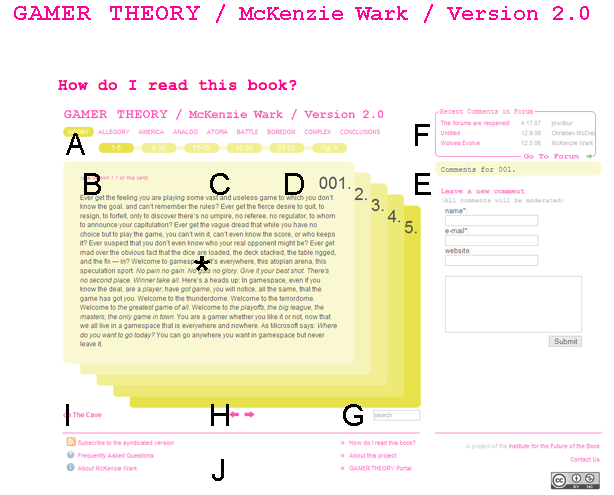James Altucher has published his 11th book. One of the books I probably won’t read. His article on tech crunch however, touches on some very interesting issues. He establishes self-publishing as way to run business. According to him (“I hope that everyone self-publishes”),
“the distinction now is no longer between “traditional publishing” versus “self-publishing.” The distinction now is between professional versus unprofessional publishing.” And the benefits for professional self-publishing seem enormous: more money, foreign rights, special packages you can offer, control over design, speed, content control and you can choose everything yourself (!). For James, the potential to publish on multiple platforms provides for a comprehensive cross media advertising campaign. Besides the book he has a video trailer, an ebook, an audio book, slide presentation, special packages and a special market offer. He is present on twitter, in the Bitcoin discourse, and of course has a well-maintained blog with a solid number of regular followers.
Noteworthy, he breaks down the recent publishing history into three stages:
“1 was publishing with a traditional publisher. 2 was when the stigma of self-publishing went away and an entire new artistic outlet was open to millions of people (15 million books published last year versus 300,000 10 years ago). And 3 is starting right now — where you can self-publish better, more successfully, better edited, better designed, better marketed, and make more money than if you go any other route. The reason this is possible only now is because for the first time, the best editors, designers, marketers are no longer working at the big publishing houses. Instead, they are striking out on their own and independently charging for their services. The demand is there. This route is more expensive than “publishing 2.0″ but is much more lucrative.”
In all this he remains very faithful to the book as a book.
And what would a good how-to book be without a clear cut how to professionally self-publish your next book? Nothing!
(slightly abbreviated)
1) BUILD YOUR PLATFORM: Twitter following, Facebook following and/or a significant blog following.
2) HOW DO YOU BUILD YOUR PLATFORM: Have an honest voice. Provide unique perspective. Blog on bigger sites that aggregate bloggers or podcasts or whatever.
3) WRITE: write 500-2000 words every day to keep exercising the writing muscle. And read good writers every day. Get a high-quality foreword for the book.
4) KNOW WHAT YOU WANT:
If you are self-publishing then you can publish your book right now without any other effort. Go toCreateSpace (owned by Amazon), check the box that you want to be both paperback and Kindle (it costs an extra $69 to be on kindle), pick a cover, upload your manuscript, and in a few days you will be published on Amazon and people can start buying your book.
If your goal is to have a published book and use it to get customers, consulting gigs, speaking gigs, etc., or a beginning set of readers for your next book, then by all means publish this way. It’s the fastest way to do it. I highly recommend it.
But if your goal is to put out the best possible product, maximize the money you make, and get the most readers, then follow the next steps, what I call “Publishing 3.0.”
5) EDITING
copy editors for basic spelling and grammar.
and one prime editor to structurally edit your publication (a la Maxwell Perkins in the 1930s)
6) DESIGN
Hire a designer (of your choice) to do your cover and interior design.
7) AUDIOBOOK
two things about audiobooks:
1. “When people see you have an audiobook, they see your book as even more credible. It stands out from the average self-published book when you have an e-book, a print version, and an audiobook. Plus, the audio book is more expensive, so even though there are fewer sales, it’s decent money.” By the way, if you self-publish, always do a print book at the very least. Even if 99 percent of your sales are going to be e-book.
2. “Make an audiobook. For your kind of book, people will love listening to it while they drive into work.”
Again, professionalism when recording an audiobook (perhaps get a voice coach, too)
But the best reason for doing the audiobook is it forces you to really look at your writing and hear what works and what doesn’t. I rewrote about 20 percent of the book after reading things that didn’t quite sound right out loud.
8) TITLE
Total control over the title.
9) MARKETING
Get a good agency (60 podcasts, radio interviews, speaking engagements and guest posts on popular blogs and websites) providing SlideShare presentation, Bitcoin press coverage (a month before I released the book and became the first book ever pre-released solely on bitcoin. we got several key media sources to cover this), a special market offer (I OFFER TO PAY PEOPLE BACK FOR THE BOOK IF THEY COULD PROVE TO ME THAT THEY BOUGHT IT AND READ IT) and a video trailer.
10) FOREIGN RIGHTS
Get a foreign rights agency to handle all of the foreign rights on a commission basis. They go to book conferences all over the world and have connections in each country.
11) OTHER MERCHANDISE (yes, mugs, posters, etc.)
12) THE NUMBERS
“In the first month I sold 44,294 copies between my paperback, audio, e-book, and even hardcover versions.”
For the full article visit tech crunch.








